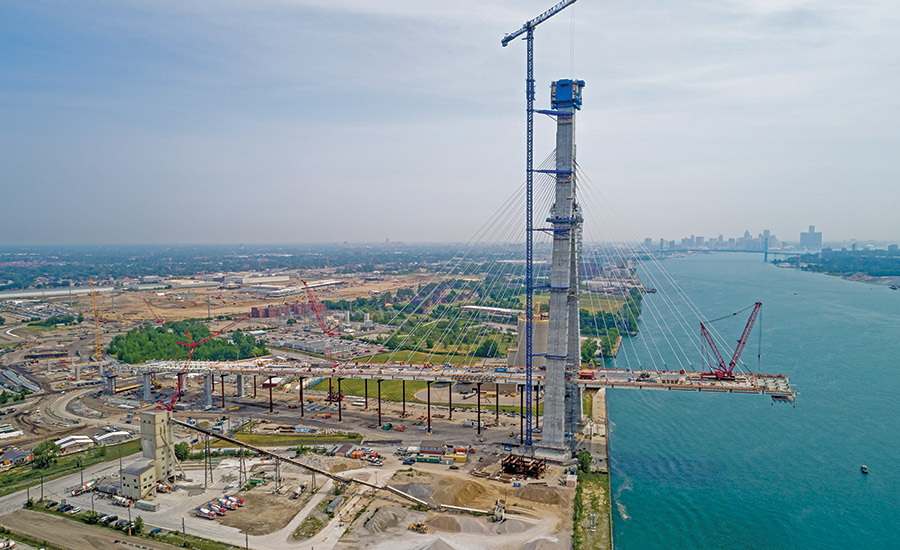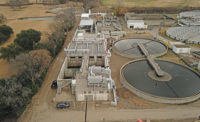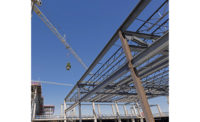Related Link:
ENR Texas & Louisiana 2023 Top Contractors
Across the skylines of the largest cities in Texas, Louisiana, Oklahoma, Arkansas and Mississippi, boom cranes are a common sight, a signal that the construction industry continues its post-pandemic growth.
But with gain comes pain as the lack of talent and materials keeps industry executives up at night.
In construction C-suites, many meetings are held batting around ideas to solve, or at least reduce, the pains of the shortages. As anyone associated with the construction trade—from rainmakers to concrete pourers—is aware, the market has been highly competitive, and the battle for talent is intense.
John Reyhan, president of Manhattan Construction Co., says, “Simply stated, fewer people are entering the industry while demand remains high. We don’t see the war on talent subsiding anytime soon.”
Fluor’s group president of urban solutions business, Terry Towle, adds, “Our biggest challenge has been heavy competition for talent. There simply aren’t enough people for all the highly skilled jobs we need to fill. Almost every one of our projects currently has open positions.”
Jose Carlos Esteban, Webber’s president & CEO, says the industry must do its homework on how to attract a new generation to the construction trades.
Webber, he explains, is focusing on its culture and people through training and customized professional development programs across the board in hopes of attracting and retaining talent.
Skip Eller, Manhattan Construction director of education and professional development, says the company also continues to invest in professional and career development programs. Citing the firm’s partnership with Cornerstone, he says Manhattan launched a new performance and talent management suite, filling out “our existing suite of Cornerstone’s learning management system and applicant tracking system.”
“Simply stated, fewer people are entering the industry while demand remains high. We don’t see the war on talent subsiding anytime soon.”
—John Reyhan, President, Manhattan Construction Co.
“Team leaders can now have a well-rounded view of their teams’ development progress and conduct richer conversations about career progression and professional and skill development. These investments in our people and significant technology upgrades provide the best opportunities for any team member with the drive and desire to grow their career with us,” he said in an emailed statement to ENR.
At the end of June, the construction industry had 374,000 job openings, according to an analysis by the Associated Builders and Contractors. Job openings dropped 5,000 last month and are down by 9,000 from June 2022.
ABC’s chief economist Anirban Basu says that despite a high number of job openings, contractors intend to increase staffing through the end of the year. “Many will continue to report that their leading challenge is the retention and recruiting of highly trained construction craftspeople,” says Basu.
While the ABC forecasts future labor woes, construction executives cautiously say they see a slight loosening in the supply chain woes.
In late 2020, construction companies started paying more for nearly all materials—from steel to concrete to drywall and timber—due to supply chain issues.
Raylena Browning, Manhattan Construction vice president of preconstruction, says managing supply chain issues remains a daily challenge for company teams.
“However, over the last year, the challenges have adjusted from including all trades to narrowing down to a few related to commodity escalations. Concrete, mechanical and electrical trades continue to be challenged from both an escalation and supply chain perspective,” she says. “Although we still witness escalation challenges related to commodity increases in select trades, it is less than in prior years. The more challenging escalation to mitigate is the increasing need to manage those costs and schedule impacts related to the labor shortage.”
Fluor’s Towle says that since the start of 2023, the construction company has seen a leveling off in wage spikes, and seen much more price and delivery certainty in the supply chain. “So, with more predictability in our costs and schedules, the industry is in a better position to deliver major projects, and clients can be more confident in going to market with new investments,” he says.
Jimmy Kinley, CEO of Kinley Construction in Arlington, Texas, says developing relations with supplies is key to surviving supply chain issues. “Vendor relations, both locally and nationally, are paramount in helping minimize the supply chain issues all contractors must balance,” he says.
The last year has seen some positive news come from Washington, says Towle. While the construction industry has yet to see the full force of recent significant legislation in the U.S., the industry is expeccting major contracts in the public sector coming to market.
Fluor is seeing much progress in the energy transition area, including carbon capture, green chemicals, hydrogen, biofuels and other low-carbon energy sources. He says that that’s in tandem with the mining industry, where the company has seen significant investments in critical mineral and metals developments, particularly copper and lithium, that will facilitate a clean energy economy.
“Fluor has made it a priority to support these efforts and has proudly performed over 170 studies and engineering designs for our clients’ energy transition projects since 2021,” Towle says.
He adds that U.S. government investments in infrastructure projects have helped create a “robust” construction market, adding that the CHIPS Act and the Inflation Reduction Act are also helping. Part of those acts includes hiring American workers to win contracts.But with new investments helping to create that “robust” market, the industry’s largest conundrum continues.
“We’ve seen a lot of onshoring and reshoring of businesses to the U.S. The major challenge continues to be finding people for the highly skilled jobs needed to deliver specialized assets like semiconductor and pharmaceutical manufacturing facilities,” he says.






Post a comment to this article
Report Abusive Comment